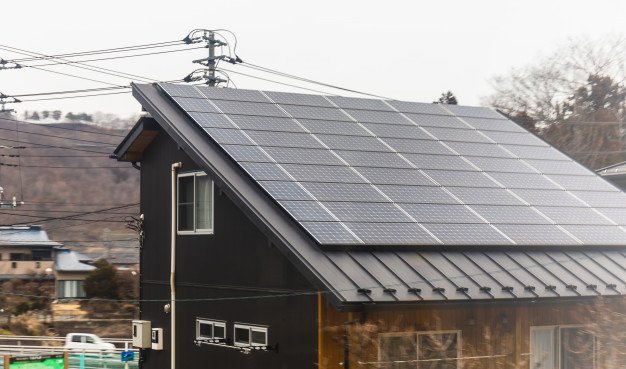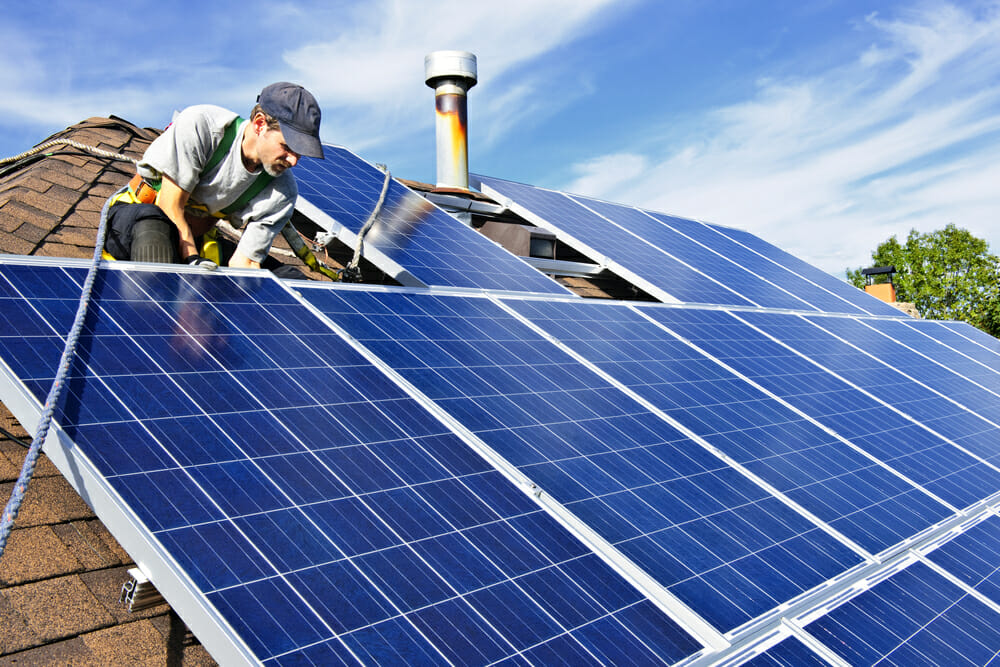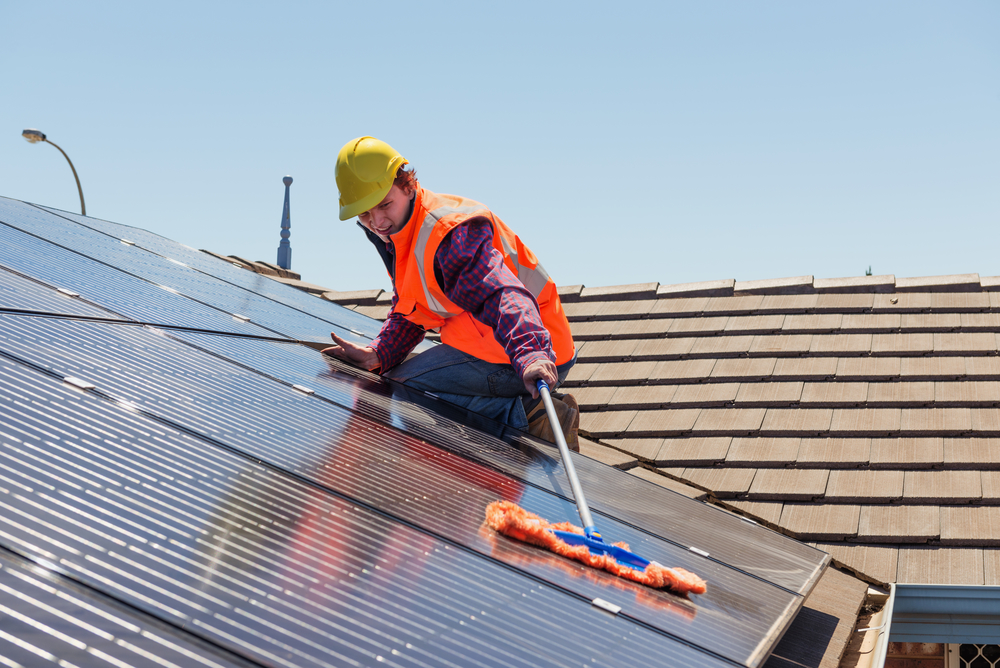Tag: Solar Panels

10 Steps To Take To Set Up Solar Panels At Home
Solar panel has become increasingly popular in the past few years. This is partly driven by how environmentally friendly it is, although many people have noted how economical it can be too. Despite being a smart decision for lowering energy bills, potential users can be put off by its installation costs. This shouldn't be an issue, as installing solar panels at home can be much easier than people might expect. As long as you have some DIY electrical knowledge, then you should be able to install the panels yourself. As Gem Energy Brisbane Solar Power notes, there are a number of steps that you'll need to take when installing a solar panel at home. Steps To Take To Set Up Solar Panels At Home 1. Calculate Your Electrical Load: Before you decide on anything, you should calculate your current electrical usage. Once you've done so, you'll then be able to determine which solar panels and other parts you'll need. This is relatively simple to do, and often only requires a bit of math, plus an energy reading from your meter. 2. Battery Selection: Which battery you choose can be vital for your solar power. Naturally, the panels only generate electricity during the day, so you'll need to store some for the night. To do so, you should choose a high-quality one that provides a consistent amount of electricity over time. This will make it reliable when you're running several appliances during the evening. 3. Select Your Solar Panels: There are a considerable number of solar panels to choose from, which can be overwhelming. When you're deciding on one, you should look at its energy rating. This is typically determined based on set conditions, with some being more appropriate for certain weather. As a result, you should research how well a model will perform in your area. 4. Know Where To Place It: When you're considering a solar panel, you should determine where the best place on your property to put it is. There can be a few factors at play here, with access to sunlight being the most notable. The obvious place to install the panel is your roof, although you'll need to decide where to place it here. 5. Choose A Charge Controller: This is a device that's placed between your battery and solar panel and regulates the flow of electricity between the two. Choosing the right one can make a large difference, as it dictates how effectively your battery will charge. This means that you should spend a considerable amount of time picking one. 6. Pick The Right Inverter: Solar panels typically turn sunlight into alternating current (AC). However, most appliances function on direct current (DC). As such, you'll need to purchase an inverter, which switches from one to the other. There are a few types of inverters to choose from, each with its benefits. As such, you should spend time researching each. 7. Mount The Solar Panel: Once you have the equipment, it's now time to mount the solar panel. You can either create your own mounting mechanism or purchase a premade one. If you're not overly familiar with the process, then it's recommended that you buy a kit. When creating your own, be aware of the angle that you're mounting it at, as this will affect how much sunlight it receives. 8. Inverter & Battery Stand: Similar to the solar panel itself, you may need to build a stand to hold your battery and inverter. However, this isn't a complicated task, as you'll be able to make do with a box that includes a hole for the wiring. Once everything has been wired, it's important to note that you should cover this hole as much as possible to keep everything from being damaged. You should also ensure that it's kept away from running water. 9. Start Wiring: The wiring may be the most overwhelming part of the process, although it can be more straightforward than you think. Put simply, the connection should go from the solar panel to your charge converter to your load, i.e., your appliances. Alongside this, the charge controller should be connected to your battery, which should also be connected to your load. 10. Start Enjoying Your Solar Panel: Once you've connected everything in the appropriate manner, you can start enjoying your solar power. While setting everything up, you should ensure that you've done so in the right way. The wiring is the most important area here, so you should take care of it. Read Also: What You Should Know About Solar Energy For Schools: Benefits, Expectations, And More
READ MOREDetails
Ready Rooftops – How to Install Solar Panels
Solar power has risen in popularity rapidly all over Australia since the sudden decrease in costs at the beginning of the turn of the century and the advances in solar technology which have made commercial solar power much more accessible and affordable for all. With the continuing rise in the use of solar power, more and more home and business owners are moving to this renewable energy source and enjoying the benefits of green power. If you are deciding whether or not to make the switch to solar power, there are some things you need to consider before you go solar. Understanding the installation process is important to ensure that you install your solar panels for optimum efficiency. Most homeowners and business owners can install panels right away but there are a few things to be aware of so that your panel installation is a success and you can enjoy the benefits of solar power for many years to come. Let’s take a closer look at a few things that individuals and businesses should keep in mind before and during the installation of a new solar panel system. Determine How Much Power Will Be Produced: Before you install solar panels on your property, it’s important to take some time to do the necessary calculations in relation to the property you want to install your solar panels on to find out how much your solar system will produce. It doesn’t take long to do the calculations and once you have the results, you can determine how much power you can expect from your solar installation. Most solar installation companies can do an evaluation of your property before you install your panels to ensure it’s a suitable match for solar energy. Evaluate Your Roof: Evaluating your roof to see that it is appropriate to generate solar power is critical before you install your panels. This is usually done by the company before any contract is signed to ensure that the user will be able to make the most of the solar energy collected. However, it is not a bad idea to consider assessing your roof and position beforehand yourself too. If a roof is very shaded or the property is hidden from direct sunlight by another building or foliage, it may be necessary to reconsider your decision to go solar or come up with a different approach. For example, it’s possible to build solar installations on lawns which can equally benefit your property. Decide How Many Panels You Will Need: Prior to your installation, you should find out how many solar panels you will need, in terms of the size and scale of the solar installation and the number of photovoltaic cells. In order to find out this information, you should analyse your property and the energy capacity it currently works off. By carrying out an energy audit, you should be able to say with certainty how much power you need to use to fuel your home or business and therefore be able to decide on the measurements for your installation without any problems. Structurally Sound: If you have decided that installing a solar panel system on your roof is the right move, you will have to make sure that your roof is structurally sound and can take the weight and physical attachment of the system. Solar panel installations can last up to 30 years without any need to remove them so it is best to know that your roof will not need to be refurbished a few years down the road. Install Your Solar Panels And Enjoy A Greener Future: Once you have evaluated your home to ensure that the property is a good candidate for a solar installation, you will need to call your installation company. They will give the property one final look-over before and give you the green light before you complete the necessary paperwork. After the contract has been signed, you will be able to go ahead and prepare the orders for photovoltaic or thermal cells and the right inverter for your electric wiring. As soon as everything is set in place, you can set a date for the installation of your solar panels. Your installation company will do the rest of the work for you, install the panels and connect you to the national electricity grid so that you can take advantage of any excess energy that is produced through your system. With your solar panels installed, you can enjoy all of the benefits of solar power and look forward to a greener future. Read Also: Prepare Your Solar Panels For The Fall How To Start Living Off The Grid Feature Image: modernize.com
READ MOREDetails
Prepare Your Solar Panels for the Fall
Summer is done, and you can already see it by the drop in temperatures and the duration of the day. With shorter days also comes the reduced amount of sunlight during a 24 hour period, which worries some solar panel owners. Some people aren’t sure how effective their solar panels will be during the colder period of the year. However, as experts from Action Solar assure us, panels work just fine throughout the year; all you need to do is make sure that you optimize them for the season. Here’s how. Clean Your Panels: No matter how many panels you have, they are exposed to the elements all the time, and naturally, they get dirty. However, solar panels are quite durable and strong, meaning that you don’t need to clean them very often and even when you do, you don’t need to go into too much detail. In fact, if you clean them too often, you might damage them, so it’s better to give them a cursory sweep every month or so and be done with it. Removing debris like leaves and branches are more important than dusting them, as most solar panels only lose about 7% of their effectiveness when dirty, as researchers from the University of California in San Diego found out. Adjust the Tilt: During the summer, the sun falls more directly to the ground, meaning that your solar panels will absorb a lot of the sunlight even without careful positioning. However, as summer transitions into the fall and eventually winter, the sun will shift and the rays will fall in a more tilted angle. So, if you want to use as much of the sunlight as possible, you will need to adjust your panels accordingly. Naturally, you should not do this on your own, but rather invite professionals to do it for you. Not only are they skilled in handling solar panels, but they will be able to calculate the optimal tilt and positioning of your panels. The best solar companies in California recommend realigning your solar panels at least twice a year in order to maximize the productivity of your panel throughout the year and not just in summer. However, if you include the fall and spring adjustment as well, you will be able to actually bring out the maximum from your panels. Deal with the Decreased Output by Saving Energy: During the summer, days are longer and usually sunnier than any other part of the year. That’s great news for your solar panels because they will be able to produce more energy. That being said, you probably spend a lot of electricity just by running your AC all day. In the fall, on the other hand, you don’t need your AC and the days are still relatively long. So, you will be able to produce a lot more energy which you won’t immediately spend. This is the time when you will be able to bring your electricity bill down by a noticeable margin. However, as fall progresses, the days will be shorter, which means that you may need to cut some unnecessary electricity spending if you want your bill to remain low; that is until winter rolls around, and you need to fire up your furnace. The technology behind solar panels is improving every day, and the time when solar panels only used to be productive in the summer are long gone. Read Also: Everything You Need To Know About Portable Solar Power How To Start Living Off The Grid
READ MOREDetails















